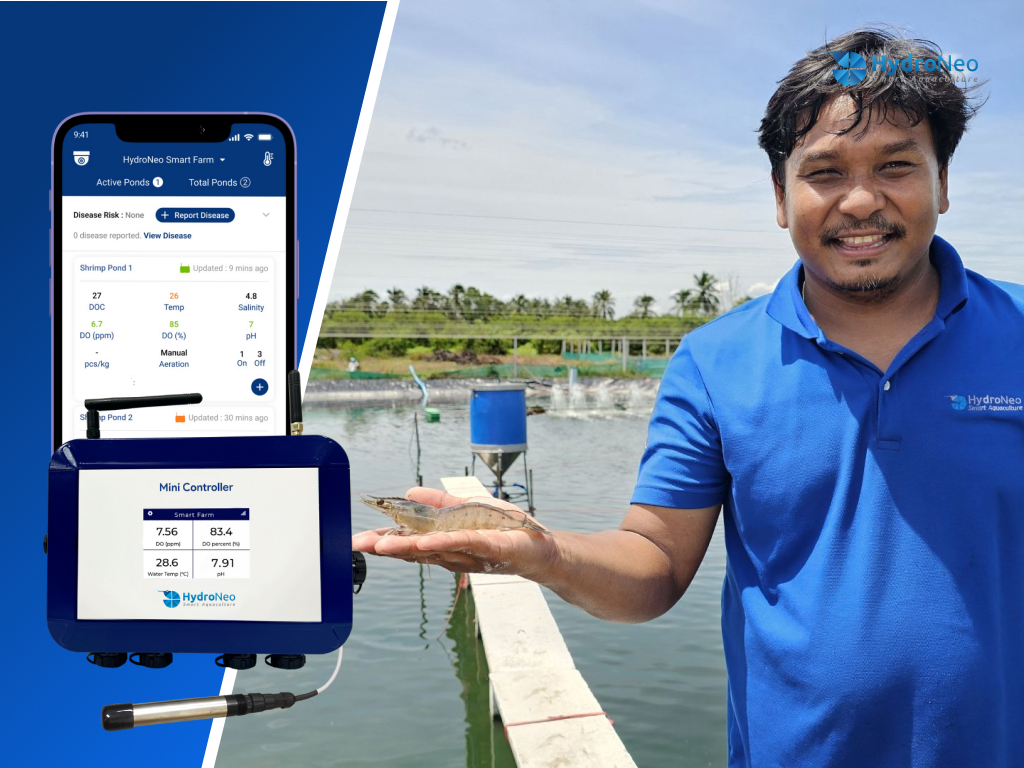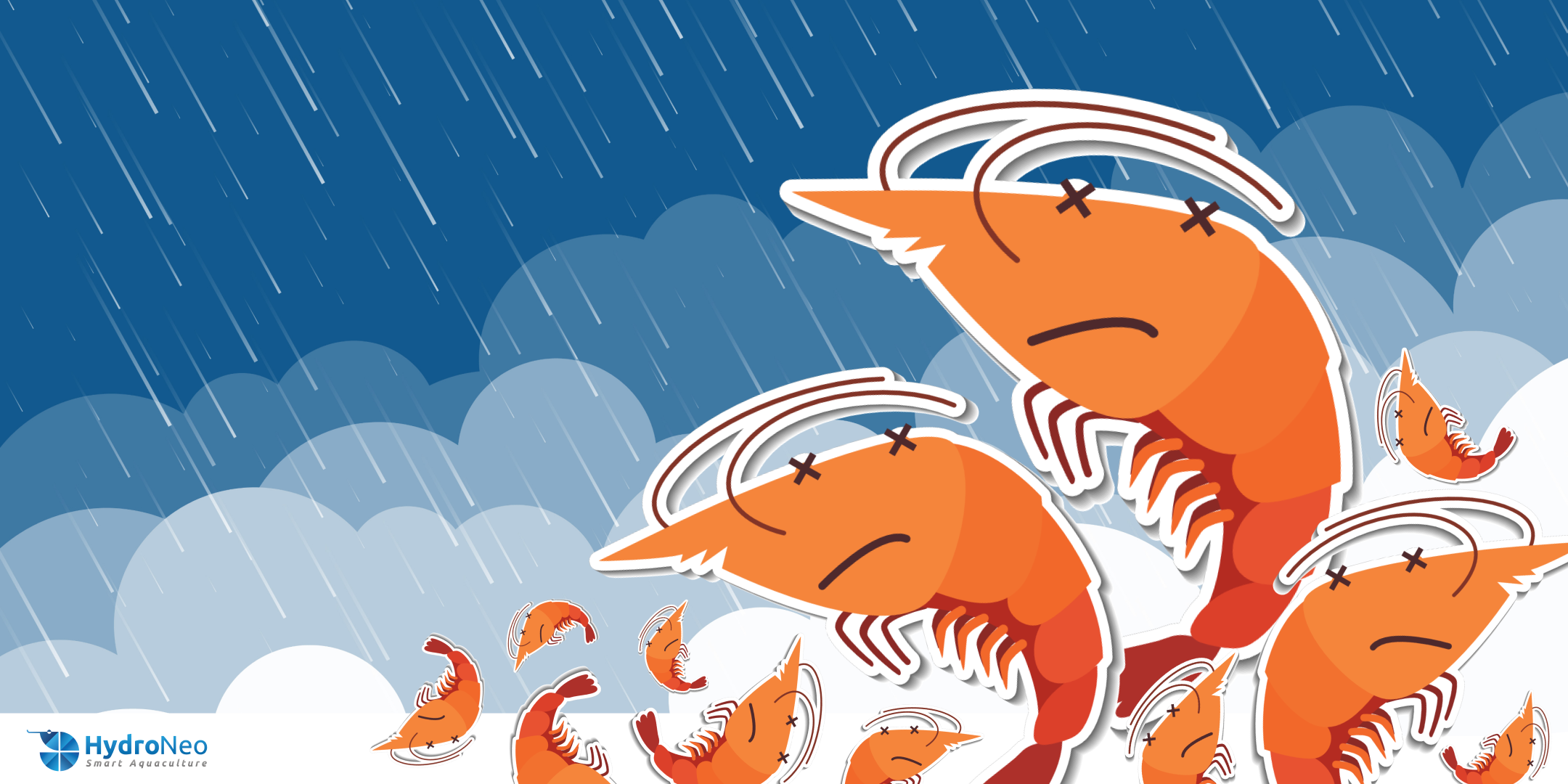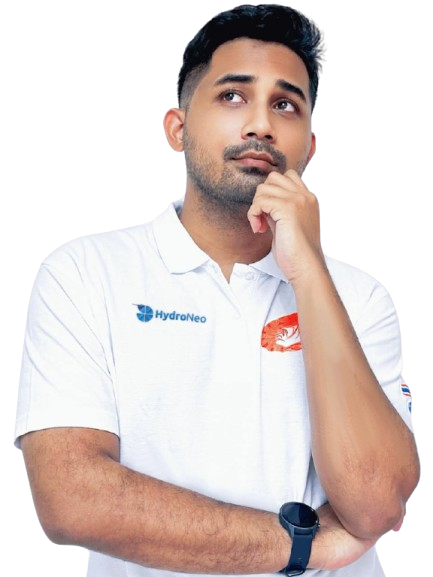ความเร่งด่วนในการปรับตัว
อุตสาหกรรมเพาะเลี้ยงสัตว์น้ำของไทย ซึ่งครั้งหนึ่งเคยครองอันดับหนึ่งของโลกในด้านการผลิตกุ้ง กำลังเผชิญความท้าทายครั้งใหญ่ ทั้งต้นทุนที่สูงขึ้น ราคาที่ตกต่ำลง และความต้องการของผู้บริโภคที่เปลี่ยนแปลงไป สิ่งเหล่านี้ทำให้แนวทางการเพาะเลี้ยงที่เราใช้มาตลอดกว่า 30 ปี ไม่สามารถรักษาความได้เปรียบในการแข่งขันได้อีกต่อไป สิ่งที่เคยใช้ได้ผลในอดีต ไม่ได้การันตีความสำเร็จในโลกที่เปลี่ยนแปลงอย่างรวดเร็วอีกแล้ว
ประการแรก การเปลี่ยนแปลงสภาพภูมิอากาศ กำลังส่งผลกระทบอย่างมากต่อการเพาะเลี้ยงสัตว์น้ำ รูปแบบสภาพอากาศที่ผันผวนทำให้สภาพแวดล้อมฟาร์มไม่เสถียร ความเสี่ยงของโรคระบาดเพิ่มสูงขึ้น ตัวอย่างชัดเจนเกิดขึ้นในไตรมาสแรกของปีนี้ เมื่อเกิดอากาศหนาวผิดปกติ ตามด้วยคลื่นความร้อน ส่งผลให้การเลี้ยงยากขึ้นและโรคกุ้งแพร่ระบาด
ในขณะเดียวกัน ผู้บริโภคก็ยกระดับมาตรฐาน โดยให้ความสำคัญกับสวัสดิภาพสัตว์ การเลี้ยงที่ปลอดสารปฏิชีวนะ และความสามารถในการตรวจสอบย้อนกลับตั้งแต่ฟาร์มถึงโต๊ะอาหาร แนวโน้มตลาดโลกที่หันมาสู่ “ความยั่งยืน” ทำให้ความต้องการเหล่านี้ไม่ใช่แค่ “ตัวเลือก” อีกต่อไป แต่กลายเป็น “ข้อบังคับ” ตัวอย่างเช่น ผู้ค้าปลีกในสหราชอาณาจักรหยุดรับซื้อกุ้งที่ผ่านการตัดตาแม่พันธุ์ และกำหนดให้ใช้วิธีช็อตไฟฟ้าแทน ขณะที่ศุลกากรสหรัฐฯ และยุโรปก็มักตรวจพบสารตกค้างยาปฏิชีวนะ และสั่งทำลายสินค้าทันที
แต่ความท้าทายไม่ได้หยุดแค่นั้น—การแข่งขันระดับโลกดุเดือดขึ้นเรื่อย ๆ เราจำเป็นต้องถามตัวเองว่า “เราพร้อมหรือยังที่จะรักษาหรือเพิ่มส่วนแบ่งตลาดโลก?” หากดูการเติบโตของการผลิตระหว่างปี 2020 ถึง 2024 ในกลุ่มประเทศเพื่อนบ้าน เวียดนามมียอดการผลิตกุ้งเติบโตถึง 90.8% อินโดนีเซียเติบโต 82.3% ในขณะที่ไทยเติบโตเพียง 12.5% เท่านั้น
จากข้อมูลเหล่านี้ เราเห็นชัดเจนแล้วว่า “เรายืนอยู่ตรงไหน” และทำไมจึงถึงเวลาที่เราต้องปรับเปลี่ยนวิธีการเพาะเลี้ยงใหม่ โลกเปลี่ยนไปแล้ว ไทยเองก็ต้องเปลี่ยนตาม หากต้องการรักษาความสามารถในการแข่งขัน เราจำเป็นต้องยกระดับสู่ มาตรฐานใหม่ระดับโลก—ผลิตได้มากขึ้น ต้นทุนต่ำลง คุณภาพสูงขึ้น และสอดคล้องกับมาตรฐานสากล
และคำตอบคือ การเพาะเลี้ยงสัตว์น้ำเเบบเเม่นยำ หรือ Precision Aquaculture—กุญแจสำคัญที่จะทำให้การเปลี่ยนผ่านนี้เกิดขึ้นได้จริง...ถึงเวลาเเล้วที่เกษตรกรต้องปรับตัวเพื่อไปต่อ
สู่โลกเเห่งการเพาะเลี้ยงเเบบเเม่นยำ
ทำสิ่งที่ถูกต้อง ในเวลาที่เหมาะสม บนพื้นฐานของข้อมูลที่ถูกต้อง
เพาะเลี้ยงสัตว์น้ำแบบแม่นยำ คือการบูรณาการ เทคโนโลยีอัจฉริยะ การวิเคราะห์ข้อมูล ปัญญาประดิษฐ์ (AI) และระบบอัตโนมัติ เข้ากับการทำฟาร์มเพาะเลี้ยง จุดมุ่งหมายคือการเพิ่มประสิทธิภาพการเลี้ยงสัตว์น้ำ โดยเลิกพึ่งพาการคาดเดา แล้วใช้ข้อมูลจริงแบบเรียลไทม์ในการตัดสินใจแทน นี่ไม่ใช่เพียงการปรับปรุงวิธีการเดิม แต่คือการเปลี่ยนแปลงแนวคิดการทำฟาร์มอย่างสิ้นเชิง จากการจัดการแบบตอบสนอง มาเป็นการจัดการเชิงรุก เพื่อให้ได้ทั้งผลผลิตและความยั่งยืนไปพร้อมกัน
เพิ่มขีดความสามารถด้วยการเพาะเลี้ยงสัตว์น้ำเเบบเเม่นยำ
- ตัดสินใจได้อย่างแม่นยำ – ใช้ข้อมูลจริงและ AI วิเคราะห์รูปแบบ พร้อมคาดการณ์สภาพในอนาคต เพื่อให้ฟาร์มถูกปรับให้อยู่ในสภาพที่เหมาะสมตลอดเวลา
- ควบคุมคุณภาพน้ำได้ตลอด 24 ชั่วโมง – ตรวจสอบคุณภาพน้ำแบบเรียลไทม์ คาดการณ์และตรวจจับปัญหา เช่น ออกซิเจนต่ำหรือความเป็นกรด-ด่างผิดปกติ ก่อนจะลุกลาม
- ทำงานระบบตีน้ำอัตโนมัติ – เปิดหรือปิดตามสภาพจริงของบ่อ และปรับตามสภาพแวดล้อม เพื่อประหยัดพลังงานและดูแลสุขภาพสัตว์น้ำได้อย่างมีประสิทธิภาพ
การเปลี่ยนแปลงจากวิธีการเพาะเลี้ยงแบบดั้งเดิมมาสู่การทำฟาร์มอัจฉริยะ ไม่ได้เป็นเพียงการเพิ่มประสิทธิภาพการดำเนินงานเท่านั้น แต่ยังเป็นการเปลี่ยนวิธีคิดเกี่ยวกับการทำฟาร์มอย่างสิ้นเชิง โดยใช้ AI ขับเคลื่อนการทำฟาร์มที่ฉลาดขึ้นและยั่งยืนมากขึ้น
ความสำคัญของการก้าวสู่การเพาะเลี้ยงเเบบเเม่นยำ
วิธีเเบบเดิม เเละวิธีการใหม่ "เเบบเรียลไทม์"
การเลี้ยงกุ้งแบบดั้งเดิม มักตรวจคุณภาพน้ำเพียงวันละ 2 ครั้ง เกษตรกรจึงต้องอาศัยข้อมูลที่ไม่ต่อเนื่อง ทำให้การประเมินสภาพบ่อไม่แม่นยำ และที่สำคัญ ไม่มีระบบแจ้งเตือนเมื่อเกิดปัญหาวิกฤต บ่อยครั้งจึงกว่าจะรู้ตัวก็สายเกินแก้—เสี่ยงต่อทั้งผลผลิตและต้นทุน
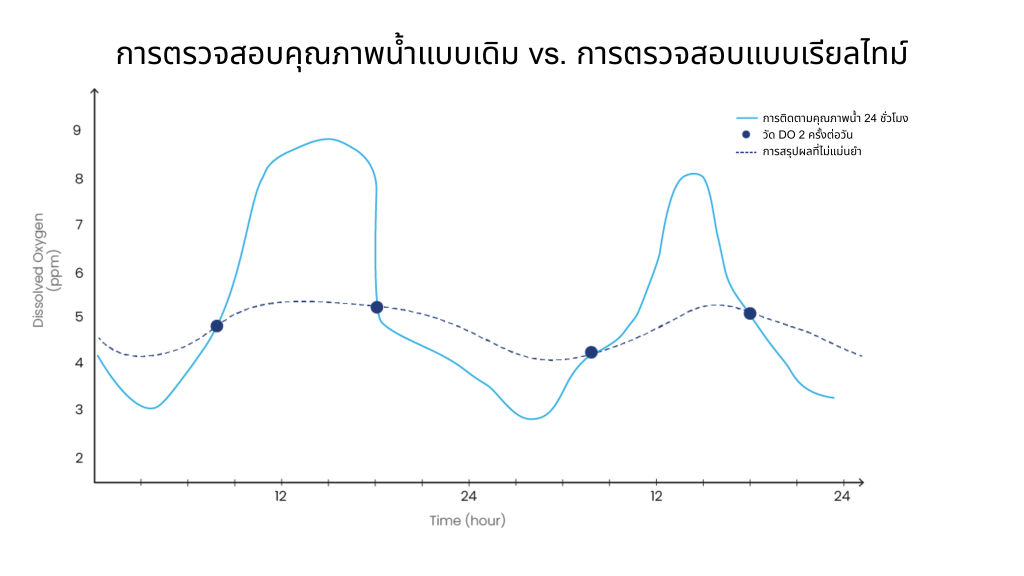
จากกราฟนี้ เราจะเห็นได้ว่าการเลี้ยงแบบดั้งเดิมมีการตรวจค่าออกซิเจนละลายน้ำ (DO) เพียงวันละ 2 ครั้ง ซึ่งค่าที่ได้จะถูกบันทึกเป็นจุดสองจุดบนกราฟ เกษตรกรหลายรายที่เราได้พูดคุยด้วย มักจะสันนิษฐานว่าค่า DO จะมีการเปลี่ยนแปลงเล็กน้อยอยู่ระหว่าง 4–5 ppm ในแต่ละวัน (ดังเส้นประสีดำที่แสดงไว้)
อย่างไรก็ตาม ในความเป็นจริง การตรวจวัดตลอด 24 ชั่วโมงจะแสดงรูปแบบที่แตกต่างออกไป — เส้นสีน้ำเงินแสดงให้เห็นว่าค่า DO สามารถพุ่งสูงได้ถึง 8 ppm และลดต่ำลงเหลือเพียง 3 ppm ได้ภายในวันเดียว
ในความเป็นจริง แค่ในไตรมาสแรกของปี 2025 เพียงช่วงเดียว ระบบของ HydroNeo ตรวจพบกรณีที่ค่าออกซิเจนละลายน้ำ (DO) ต่ำในระดับวิกฤตถึง 4,734 ครั้ง และได้ส่งการแจ้งเตือนไปยังเกษตรกร สิ่งที่สำคัญคือ เหตุการณ์เหล่านี้เกิดขึ้นแม้แต่ในฟาร์มที่บริหารจัดการโดยเกษตรกรผู้มีประสบการณ์สูงและทันสมัยที่สุดในอุตสาหกรรม—"สมาร์ทฟาร์มเมอร์" ที่ใช้งาน HydroNeo และนวัตกรรมอื่นๆ อยู่แล้ว
สิ่งนี้แสดงให้เห็นอย่างชัดเจนว่า แม้แต่เกษตรกรที่มีความรู้มากที่สุดก็ไม่อาจทราบถึงสถานการณ์วิกฤตเหล่านี้ได้ หากไม่มีข้อมูลแบบเรียลไทม์ แต่ด้วย HydroNeo พวกเขาจึงมีเครื่องมือและข้อมูลเชิงลึกต่อเนื่อง ทำให้สามารถตอบสนองได้รวดเร็วขึ้น ลดความเสี่ยง และควบคุมสภาพบ่อได้อย่างแม่นยำยิ่งกว่าที่เคย
ลดการใช้พลังงานด้วยเทคโนโลยีเเรียลไทม์จาก HydroNeo
ข้อมูลที่แม่นยำและเป็นปัจจุบัน ช่วยให้เกษตรกรสามารถลดการใช้พลังงานได้อย่างมาก เนื่องจากระบบสามารถปรับการทำงานได้อย่างต่อเนื่องตามความต้องการที่แท้จริงของบ่อเลี้ยง
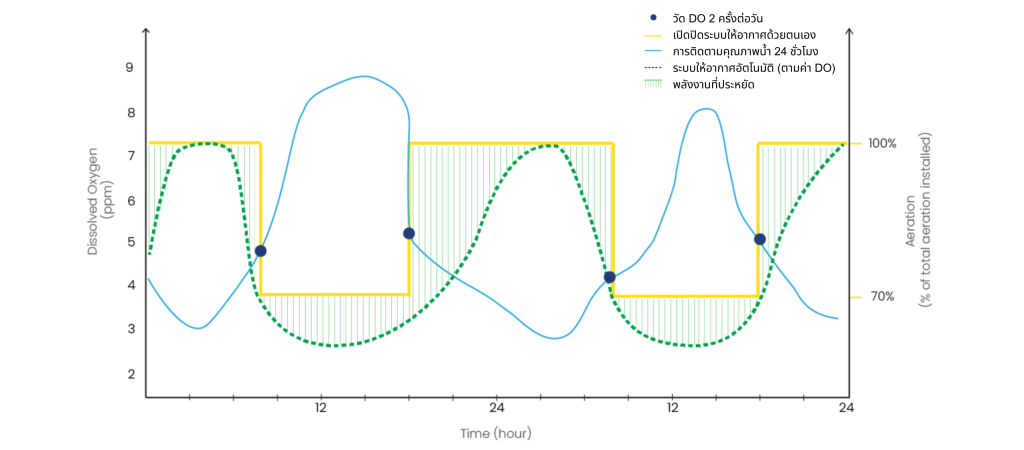
การทำฟาร์มแบบดั้งเดิมอาศัยตารางเวลาที่ตายตัวและประสบการณ์ของเกษตรกร เราเปิด-ปิดเครื่องตีน้ำตามเวลาที่กำหนด ตาม "เส้นสีเหลือง" ที่เคยทำมาตลอด แต่บ่อแต่ละบ่อไม่เหมือนกัน แต่ละบ่อมีความเฉพาะตัว ทั้งปริมาณชีวมวลของสัตว์น้ำ, ระดับสาหร่าย, รูปแบบการให้อาหาร, และปัจจัยภายนอกอย่างสภาพอากาศที่เปลี่ยนแปลง ซึ่งส่งผลกระทบต่อสภาพบ่อตลอดเวลา
แทนที่จะใช้ตารางเวลาที่ตายตัว ระบบที่ขับเคลื่อนด้วย AI จะติดตามข้อมูลแบบเรียลไทม์อย่างต่อเนื่อง ตาม "เส้นสีน้ำเงิน" โดยจะปรับการทำงานของเครื่องตีน้ำโดยอัตโนมัติตามความต้องการที่แท้จริงของบ่อ ทำงานตาม "เส้นประสีเขียว" เพื่อให้แน่ใจว่าเครื่องตีน้ำจะทำงานเฉพาะเมื่อจำเป็นเท่านั้น การดูแลแบบ 24/7 นี้สำคัญอย่างยิ่งต่อการรักษาคุณภาพน้ำที่เหมาะสมสำหรับกุ้งในฟาร์มความหนาแน่นสูง
เมื่อคุณลงแรงไป คุณก็ย่อมหวังผลตอบแทนที่คุ้มค่า และผลลัพธ์นั้นชัดเจน ด้วยการติดตามแบบเรียลไทม์ คุณสามารถลดค่าพลังงานได้สูงสุดถึง 30% ซึ่งคิดเป็นเงินประหยัดได้ประมาณ 12,000 บาทต่อรอบการเลี้ยง และนี่เป็นเพียงหนึ่งในประโยชน์มากมายของการนำเทคโนโลยีการเพาะเลี้ยงแบบแม่นยำมาใช้
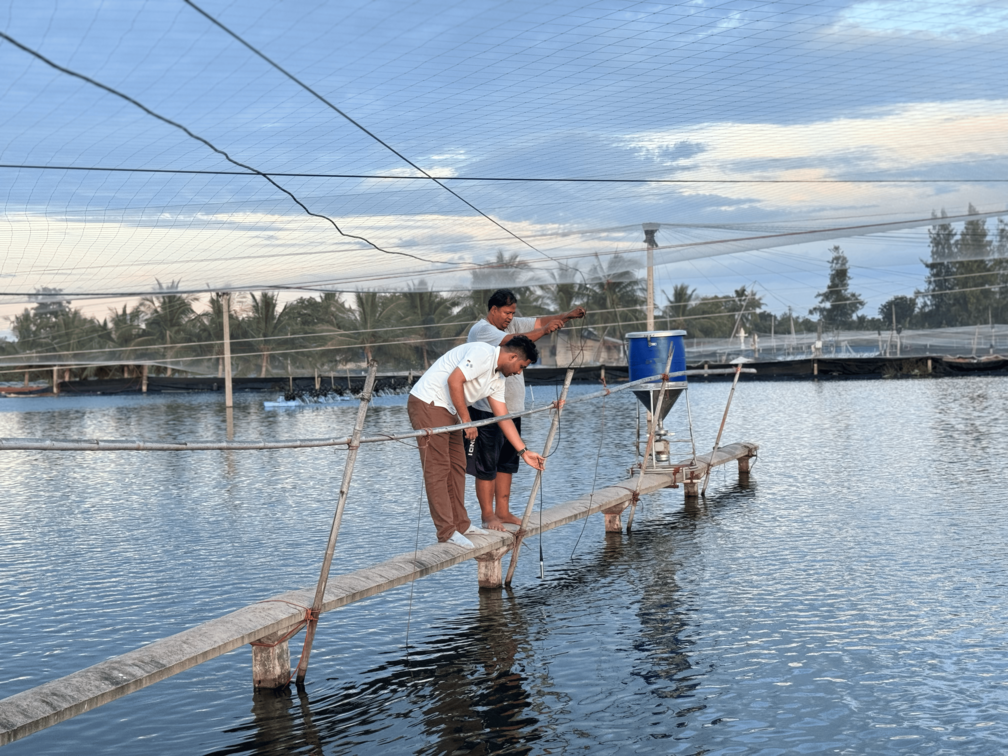
“ผมทำฟาร์มกุ้งความหนาแน่นสูง เลยต้องใช้ระบบที่ฉลาดกว่าของ HydroNeo เพื่อช่วยติดตามคุณภาพน้ำตลอด 24 ชั่วโมง เพื่อจัดการระบบการตีน้ำและประสิทธิภาพของอาหาร นวัตกรรมนี้ช่วยให้ผมลดความเสี่ยงและลดค่าไฟได้ด้วย”
ชวนมองข้ามภูเขาน้ำเเข็ง เพราะการเพาะเลี้ยงเเบบเเม่นยำ มีดีมากกว่าเเค่ประหยัดไฟฟ้า
ผู้คนมักมองว่าระบบฟาร์มอัจฉริยะเป็นเพียง "เครื่องมือไฮเทค" หรืออุปกรณ์ทันสมัยเท่านั้น บางครั้งการทำเกษตรอัจฉริยะก็ถูกทำให้เข้าใจง่ายจนเกินไปว่าเป็นแค่ระบบควบคุมเครื่องตีน้ำอัจฉริยะเท่านั้น
จริงอยู่ที่ระบบอัจฉริยะอย่าง HydroNeo สามารถสร้างผลตอบแทนที่คุ้มค่าได้จาก การประหยัดพลังงานเพียงอย่างเดียว
แต่ถ้าคุณเห็นเพียงแค่นั้น คุณก็กำลังมองเห็นแค่ ปลายยอดของภูเขาน้ำแข็ง
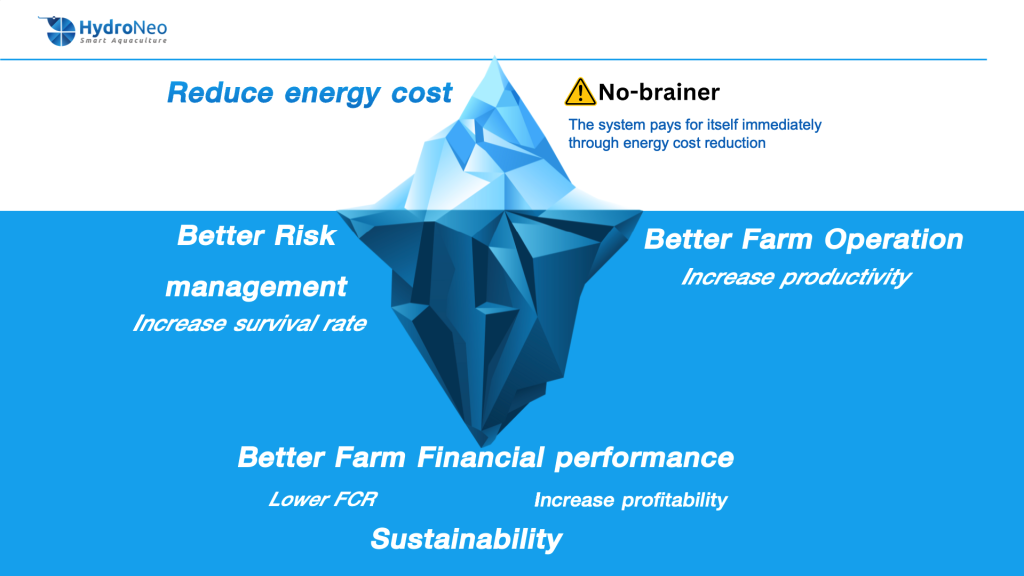
HydroNeo Smart Farm Management มอบข้อมูลที่แม่นยำและเพิ่มศักยภาพให้คุณตัดสินใจได้อย่างชาญฉลาด ผ่านแพลตฟอร์มที่ออกแบบมาเพื่อการจัดการฟาร์มที่ดีขึ้น, การบริหารความเสี่ยงที่มีประสิทธิภาพ, ผลประกอบการทางการเงินที่แข็งแกร่ง, และความยั่งยืนในระยะยาว
พูดง่าย ๆ ก็คือ นี่คือการ พลิกโฉมการทำฟาร์มทั้งหมดของคุณ—ไม่ใช่แค่การลดค่าไฟ


